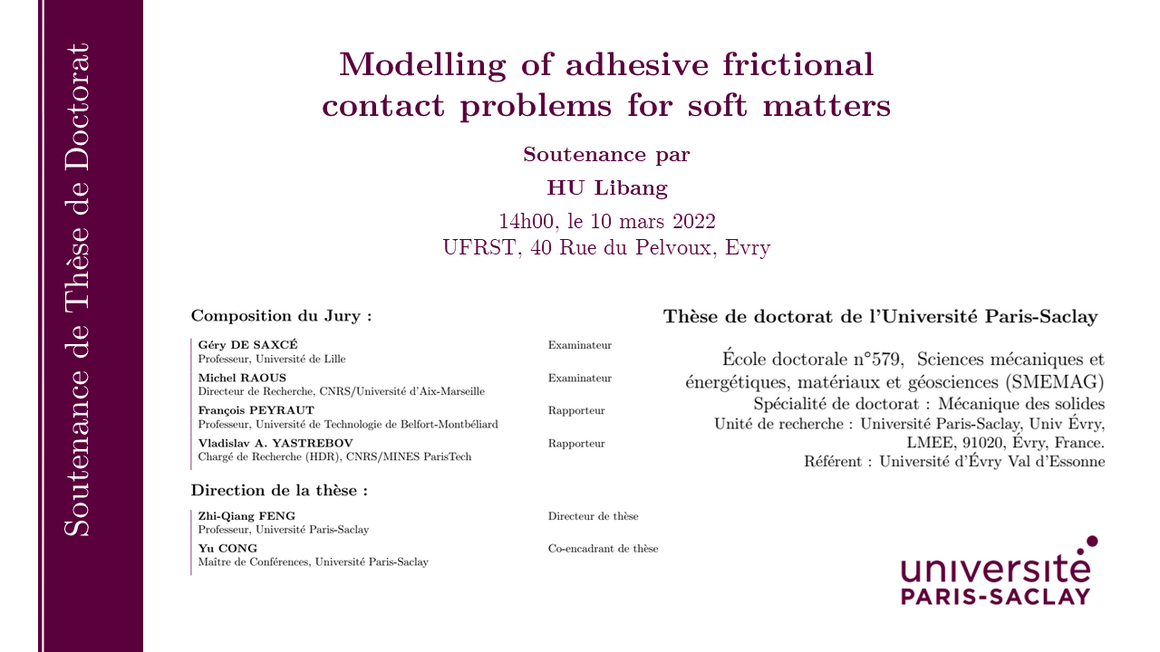Soutenance de thèse de doctorat
M. HU Libang soutiendra sa thèse de doctorat portant sur la "modélisation du contact avec frottement entre des structures en matière molle". La soutenance aura lieu le jeudi 10 mars 2022 à 14h00, à l'UFRST, salle Bx30, 40 Rue du Pelvoux, Evry
Découvrir ce travail sur Researchgate
Abstract
Dynamic frictional contact and recoverable interfacial adhesion involving soft materials represent a frequent contact phenomenon. In the numerical modelling field, constructing of a model capable of addressing contact with friction and recoverable adhesion has always been a challenging topic. In this thesis, an extended, readyto-implement 3D model for quasi-industrial problems of contact with friction and recoverable interface adhesion between soft material is formulated using the Raous-Cangémi-Cocou (RCC) interface model and a bi-potential based resolution method. The RCC model proposes a straightforward description of the interface adhesion based on a local scalar parameter, both normal and tangential effects are taken into account by the adhesive interface model, involving both the process of bonding and de-bonding of the interface links. This adhesive model has been implemented within the bi potential method, based on a set of extended unilateral and tangential contact laws. We combine the 3D extended adhesive interface model with different hyperelastic models to investigate large deformation contact problems under various adhesive interface conditions. Such as, Blatz-Ko material model for large deformation contact problems under isotropic and orthotropic adhesive interface conditions; The mechanical behaviour of biological soft tissues with surface adhesion is investigated by using the Holzapfel-Gasser-Ogden (HGO)+Yeoh anisotropic hyperelasticity model. To illustrate the capability of the implemented model, we set up various test cases in each chapter to explore adhesive contact in normal, tangential and mixed directional scenarios for different material models and interface conditions, which brings us closer to quasi-industrial modelling situations.


